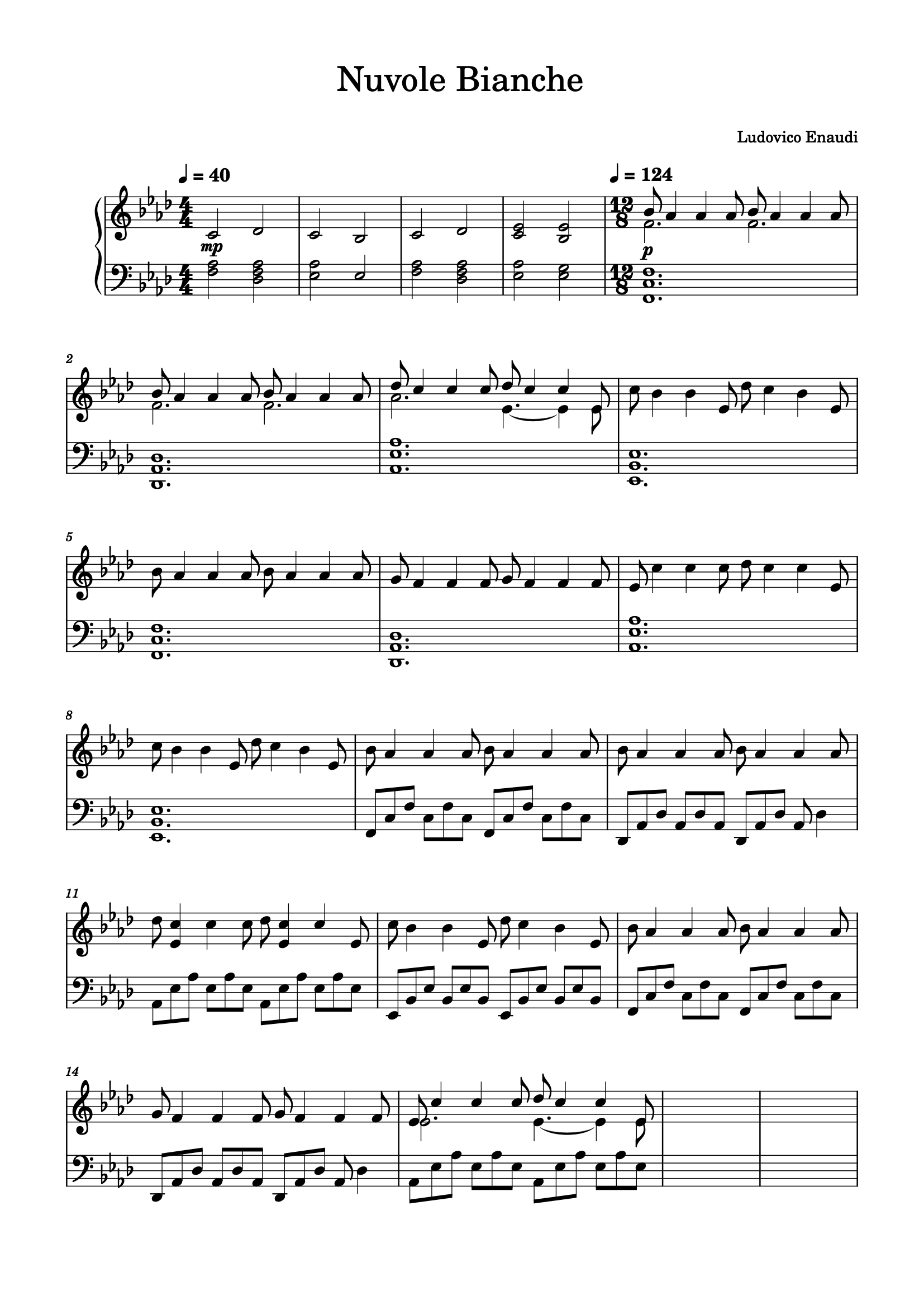Analysis#
Let us look at different pieces and let us try to figure out which which key is used, which chords are played, and maybe why the choices make sense.
Prelude I#
Every pianist played Bach’s Prelude I in C major at least ten times. It is made to learn the keys of the piano, especially major and minor chords, but it is also a beautiful and simple piece of music.
(1-4) The piece starts and ends at the tonic C, more preceisly at C (I), that is, C-E-G. In the top voice, Bach uses an arpeggio that relentlessly keeps moving through the piece. Going from C=C-E-F (I) to Dm=D-F-A (ii) to D-F-G in the first three top bars and C-E, C-D and B-D in the bottom bars. Combining Dm with C gives us a D minor seventh chord, i.e., Dm7. Furthermore, adding the B to D-F-G gives us G major seventh (G-B-D)-F, i.e. the dominant seventh. Finally Bach moves back to the tonic C and resolves the tention built up by the dominant. In summary, Bach moves from a major chord, i.e. C (I), to a minor chord, i.e., Dm7 (ii) to G7 first inversion (V) to C (I) thus he establishes the harmonic world of the piece in just four simple bars.
(5-7) Next, Bach moves into the dominant Am/C (first inversion A minor) which leads into a D7/C (with the seventh in the base) and then into a G/B (first inversion). Overall we have (vi)-(II)-(V).
(8-11) Bach moves on to C7/B into Am7 and D7 and again to G (V). From there a long journey back to C (I) begins. In summary: (I)-(vi)-(II)-(V).
(12-15) Bach starts of with a sequence of chord that functionally acts as a circle of fifths but that use diminished chords instead. He takes us into a C#m7/G followed by Dm/F and Bm7/F (diminised) until we land in Cm/E. The tonic, i.e., C is still missing in the base. In summary: (?)-(?)-(vii)-(?).
(16-19) Bach stretches out the resolution over three more bars: F7/E, Dm7 and G7. Then we finally reach the home C again. In summary: (IV)-(?)-(V)-(I).

The rest of the piece is a kind of reaffirmation of the tonic.
(20-24) Bach moves again away from the C major into C7 diminished, F7, to the dominant via F#m7 diminished, Fm6/Ab (inverted) with the B acting as a passing note into the dominant G7. Therefore, reaching the dominant feels like a resolution. In summary: (I)-(IV)-(?)-(?)-(V).
From the dominant Bach moves back to the tonic.
(25-28) The top voice moves chromatically from E to G by C/G (E on top), G7 (F on top), Am diminisehd seventh (F# added), C/G (G on top). We can clearly preceive some disonance here. In summary: (I)-(V)-(vi)-(I).
(29-34) Then we fall down into an F supported by C-D-G which leads smoothly to G7. Now we expect the perfect cadence to end by going home to the tonic C but instead Bach gives us one more round using a C7 diminished and moving into the dominant D7/C (third inversion) and finally, via almost all keys except A, into the tonic I, i.e., C. In summary: (?)-(V)-(I)-(V)-(?)-(I).

Nuvole Bianche#
Let us apply what we have learned by analysing the beginning of the famous piece Nuvole Bianche by Ludovico Enaudi.
From the signature of the piece we can see that there are 4 diminished accidentals. Using the circle of fifths we can deduce that this hints towards either Ab (Ab major) or Fm (F minor). However the piece ends on Ab which strongly hints at Ab and indeed that is correct.

Therefore, we have the following scale:
Ab-Bb-C-Db-Eb-F-G-Ab
with the following chords:
Number |
Chord |
|---|---|
I |
Ab-C-Eb |
ii |
Bb-Db-F |
iii |
C-Eb-G |
IV |
Db-F-AB |
V |
Eb-G-Bb |
vi |
F-Ab-C |
vii |
G-Bb-Db |
